Exploring Archaeological Simulations Through Agent-Based Models
Written on

Simulating Archaeology
Archaeology presents a significant challenge, as researchers strive to reconstruct entire civilizations from fragmented ruins and remnants. This has resulted in various interpretations and competing narratives regarding historical findings. For centuries, archaeologists relied solely on physical evidence uncovered during excavations, facing the dilemma of not being able to conduct "experiments" to verify their hypotheses. After all, it's impossible to rewind history and manipulate different variables to see how events might have unfolded differently. So, how can we assess various conclusions drawn from the same evidence?
Recently, a trend has emerged in archaeology that seeks to tackle this issue. With the advancements in computing power, it has become feasible to conduct intricate simulations with relative ease. Archaeologists are now developing programs to test various hypotheses through simulations. These can range from modeling the establishment of trade routes to recreating entire villages. By utilizing data gathered from excavation sites, researchers can examine and compare different theories concerning the same archaeological findings.
I find this topic incredibly fascinating! In this article, I will showcase several engaging simulations and their visual representations. Each example will be discussed in detail, along with links for further exploration if you wish to delve deeper!

Agent-Based Models
To effectively simulate archaeological scenarios, we need to consider what exactly we wish to represent. For instance, if we discover a small village from ancient times, should we attempt to simulate the village as a whole? This approach offers limited insight. Instead, it is more productive and engaging to simulate the individual inhabitants of the village. These simulated individuals can move around and interact with one another, each exhibiting unique behaviors. This method of simulation can yield very interesting results!
Such simulations are known as agent-based models. They are often employed to study complex systems and typically reveal some form of emergent property. An emergent property is one that cannot be easily predicted by examining the individual agents alone; it only manifests when these agents interact within the system. Since archaeology fundamentally explores the emergent properties arising from human interactions throughout history—such as the formation of villages and trade networks—agent-based models serve as an ideal tool for this field.
For instance, let’s consider a basic agent-based model that includes wolves, sheep, and grass. In this scenario, wolves prey on sheep, while sheep graze on grass. If one species cannot find food, its population will decline. While this resembles a typical predator-prey model, it possesses unique characteristics that cannot be fully captured with simple equations.
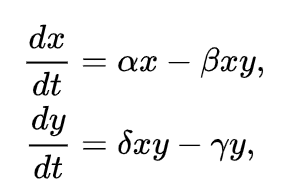
The model described above is significant, yet we can enhance its complexity. Instead, our simulation would represent each wolf, sheep, and patch of grass within the ecosystem. These agents would move throughout their environment and endeavor to survive, incorporating a degree of randomness as they navigate the field in search of sustenance.
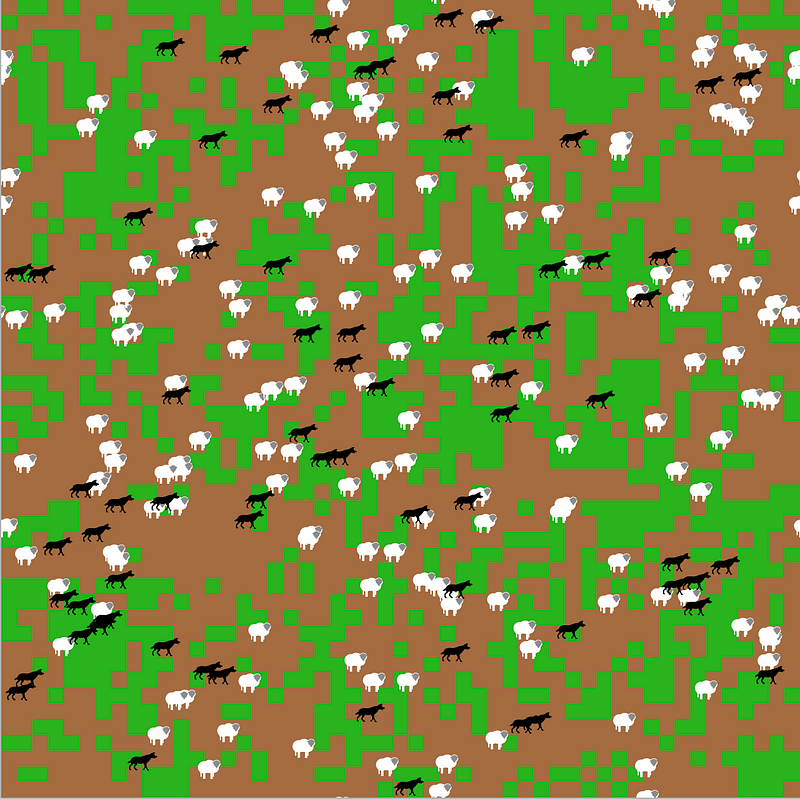
By modeling each agent, our simulation gains realism and can produce captivating behaviors. Below is a graph illustrating the outcomes of a run of this agent-based model.
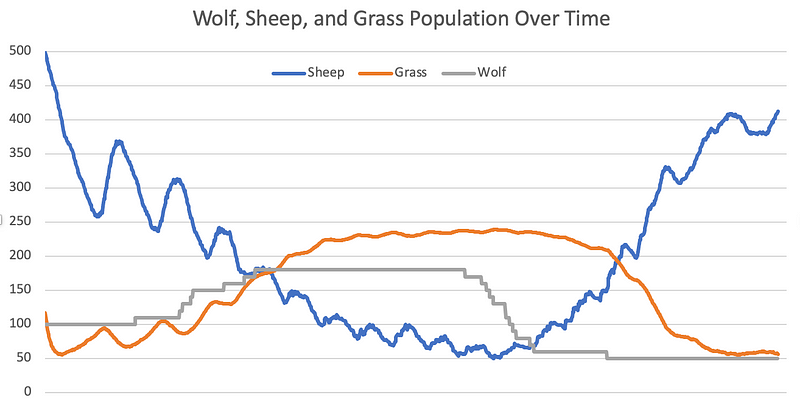
Certain aspects of this simulation are predictable. For example, as wolves consume sheep, the sheep population dwindles while grass flourishes. Eventually, the decline in sheep leads to a reduction in the wolf population due to insufficient food sources. This allows the sheep to rebound and consume more grass. If this simulation were to continue running, the wolves would likely reemerge as their food supply increases, creating a cyclical pattern.
While I've outlined the basic dynamics, the complexities are far more intricate. The sheep population exhibits distinct fluctuations. None of these trends follow simple trajectories that could be easily described with a formula. Due to the inherent randomness in agent movement, each simulation with identical initial conditions will yield slightly different results. The overarching trend remains consistent, but the specific details will vary. This exemplifies the beauty of agent-based models: they capture both the general trends and the inherent randomness of complex scenarios.
Numerous intriguing variations of this model can be explored. For instance, introducing a variable climate could influence grass growth rates, creating additional dynamics to consider. You can also increase complexity by assigning distinct behaviors to each wolf and sheep, simulating intra-population diversity. Feel free to share your thoughts and ideas in the comments!
Now that we have a grasp of agent-based models, let’s apply them to archaeological questions.

Path Creation
A key aspect of archaeology involves identifying the routes traversed by ancient peoples. Paths often emerge organically, shaped by frequent use and convenience. As more travelers utilize a route, it becomes worn down and more likely to be used in the future. This concept is straightforward to simulate using an agent-based model. Let’s explore a simple example utilizing NetLogo.
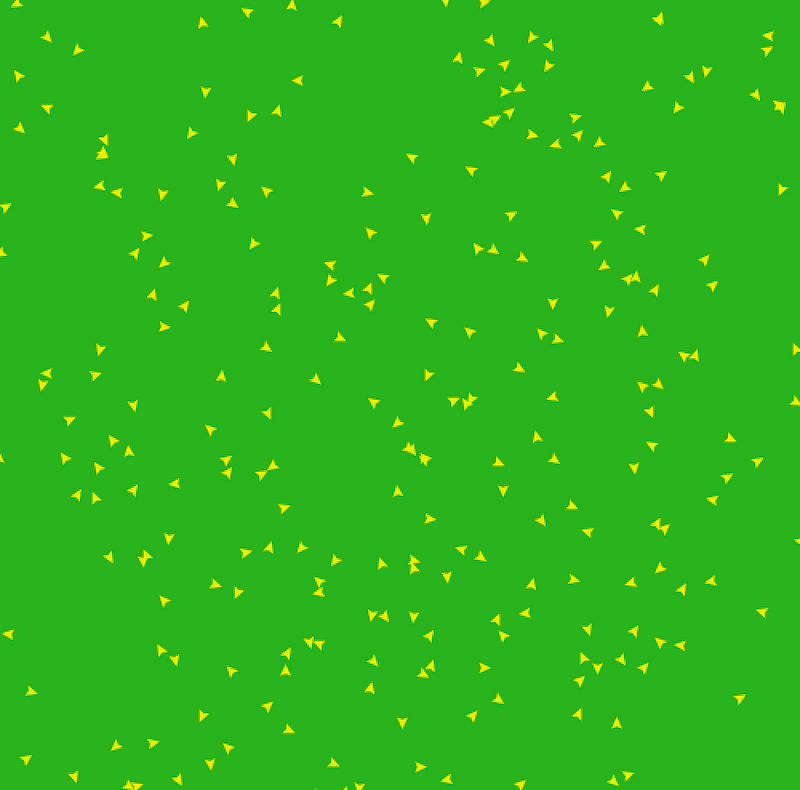
We start with several agents depicted as arrows that navigate the screen, leaving behind a trail. This trail increases the likelihood that subsequent agents in the vicinity will follow it. As we run this model, we can anticipate the development of a trade network over time. After letting the simulation run, we can observe the results below.
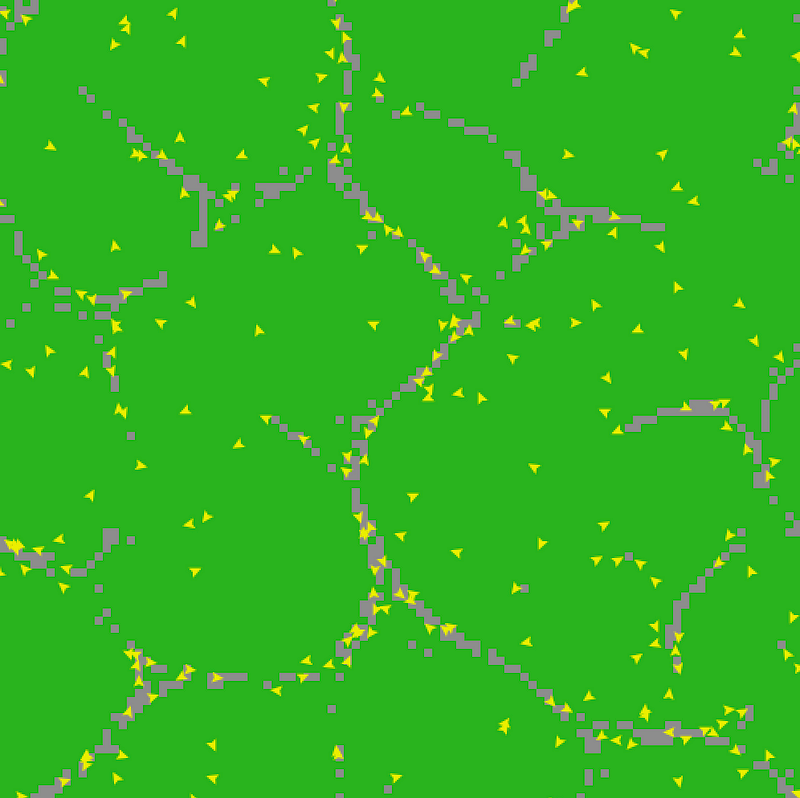
The grey dots indicate established trails, revealing the early formation of a road network. Additionally, many agents are now adhering to these trails instead of wandering off.
This simulation is, of course, a highly simplified representation. In reality, trade routes are established between populated areas and must consider the surrounding terrain. However, we can use this model as a foundational concept to understand the emergence of trade networks. Interestingly, each time this model is run, the resulting network will vary while still adhering to the fundamental principles.

Foraging
Another crucial aspect of ancient societies was food procurement. A common method involved foraging for edible plants and berries across the landscape. Foragers needed to employ optimized strategies to maximize their food collection. As you might expect, we can simulate these strategies to better understand their effectiveness.
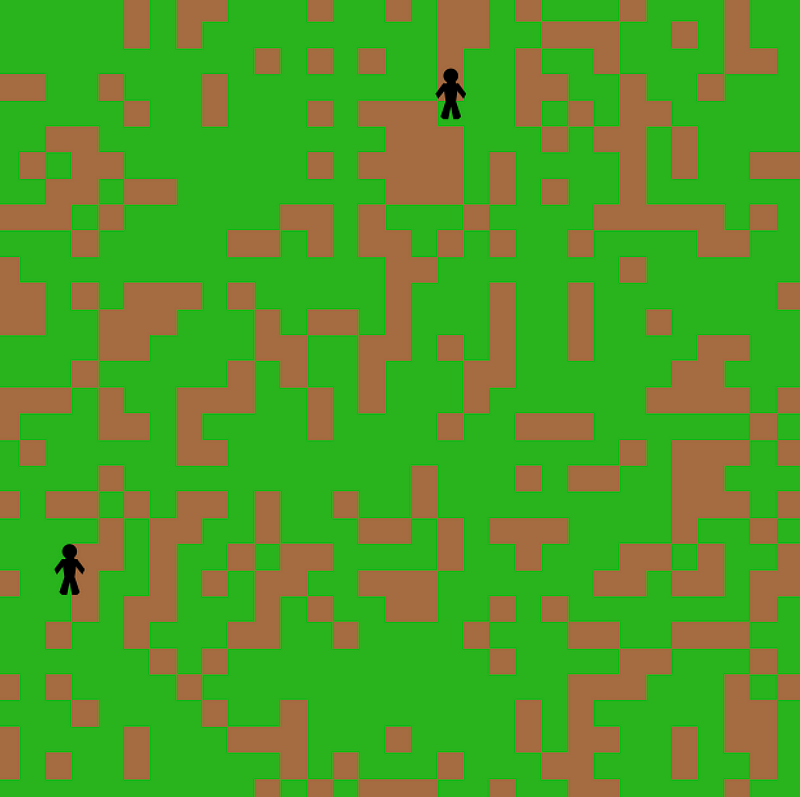
In this scenario, we see two foragers searching for food, with abundant resources indicated by the green tiles. The foragers will begin by exploring their immediate surroundings to locate food, aiming to maximize their yield while minimizing travel time.
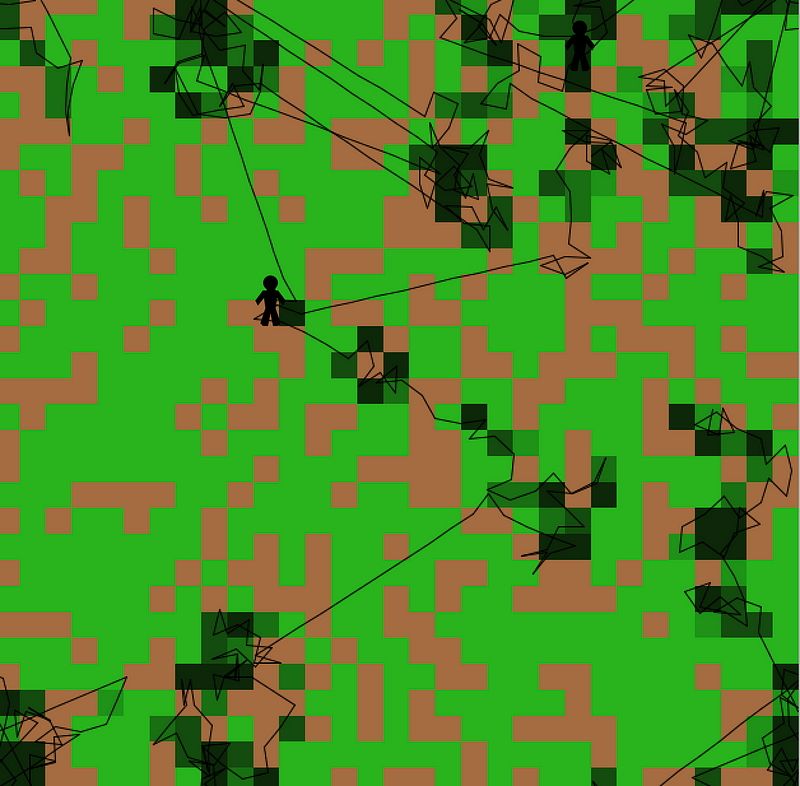
The algorithm operates by having foragers initially search short distances for food. Once their local supply is sufficiently depleted, they make a longer trek to a new area and restart the process. This pattern can be traced by the black lines representing their paths. This strategy is known as optimal foraging theory, which research has shown many species utilize to find food.
Complex Societies
The examples presented so far illustrate individual concepts, but actual historical events are influenced by a multitude of interacting factors. While we are not yet capable of simulating this complexity in full, we can strive to progress in that direction.
Researchers have developed highly intricate simulations designed to illustrate the emergence of villages and agricultural practices. In the study Iawmura 2014, a complex model was created to simulate life in the Amazon region, incorporating diverse animal species, food production, household development, and water levels. Below are some results from this simulation.

As the images progress from left to right, the simulation advances through time. The circle forming in the lower-left corner represents the village, while the pink dots (which may require zooming in to see) indicate cultivated farmland. If you’re interested, I encourage you to check out the full study linked at the end of this article. The researchers ran the simulation multiple times with varying parameters to observe different outcomes, providing a fantastic opportunity to see archaeological simulations in action!
Going Further
I hope this article has provided you with valuable insights! Please feel free to leave comments with any questions or additional ideas for utilizing agent-based models in archaeology. The use of simulations to test archaeological theories is still a nascent field with much potential for exploration! For those looking to learn more about agent-based models and their application in understanding ancient civilizations, I have included several resources below.
- All models discussed in this article were created using NetLogo, a fantastic program for exploring agent-based models and complexity theory. It’s user-friendly and free! There’s an extensive database of models created by others that I highly recommend checking out.
- My primary inspiration for this article came from the free online book Agent-Based Modeling for Archaeology. It’s an excellent resource filled with numerous examples and further reading. I enjoyed it so much that I purchased the physical copy!
- Some information for this article was sourced from a wonderful tutorial on GitHub—definitely worth checking out!
- If you’re interested in agent-based modeling more broadly, Complexity Explorer offers a free online course packed with valuable information. There are many other courses available on that site that I also recommend.
- The paper referenced in this article (Iawmura 2014) is linked here, containing a wealth of great insights—highly recommended!
- The YouTube channel Primer features many interesting videos showcasing agent-based models in action. I’ve linked a particularly relevant one for your interest.
- For a more formal introduction to this topic through a textbook, I recommend Agent-Based and Individual-Based Modeling: A Practical Introduction by Railsback and Grimm.
If you found this article enjoyable, consider giving it a clap! You may also want to follow me for more stories like this one. I publish weekly content on mathematics and science.